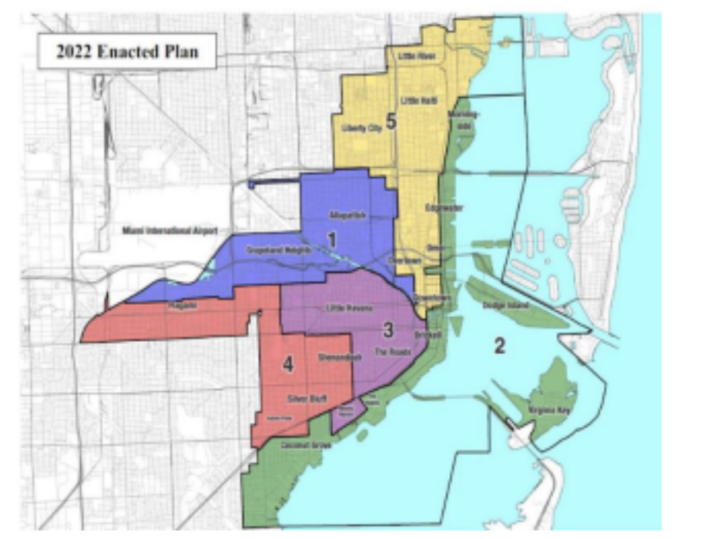Commissioner Joe Carollo is suddenly living outside his district
A U.S. District Court judge on Sunday tossed out the new same-as-the-old redistricting map passed by city of Miami Commissioners in June, saying it did nothing to remediate the racial gerrymandering found in the first version. A substitute map prepared by the ACLU, one of the plaintiffs that sued the city, will be used instead for the November election. The city must submit it Monday.
Even if the city appeals the decision, which it will, this will be the map used Nov. 7, which will see Districts 1, 2 and 4 — Alex Diaz de la Portilla, Sabina Covo and Manolo Reyes, respectively — on the ballot. It also affects District 3 Commissioner Joe Carollo, who had already moved back into his Coconut Grove house, which had intentionally and painstakingly been drawn into District 3, and which goes back into District 2 now.
Carollo is suddenly living outside his district. No, really this time. How long does he get before he has to move again?
Read related: City of Miami redistricting still divides neighborhoods, now on partisan lines
The new map also keeps candidate Miguel Gabela in District 1. Gabela, who has been running against ADLP since January, had his house intentionally and painstakingly drawn out of the district during the “remedial” rewriting — after ADLP didn’t love his polling numbers.

The first bad map, which divided Coconut Grove into three districts, was passed in March of last year. A group of residents and the ACLU sued in December and, in February, after a five hour hearing, 105 exhibits and the testimony of city consultant Miguel De Grandy — and after examining “the contemporaneous statements of various commissioners” — U.S. Magistrate Judge Lauren Louis found that race predominated in the drawing of each of the five commission districts. She threw out the map and told the city to present a new one.
In June, the commissioners were presented with different choices by the plaintiffs, but chose a second map drawn by De Grandy — actually it’s called V12 but the city pretends there were no versions before it — which was almost, basically, the same thing as before. Except that Gabela had been drawn out of D1.\
But because the “remedial plan” was based on the same “racial breakdown” of the first plan, it was also rejected.
Read related: Joe Carollo votes to keep his house — and other Miami redistricting madness
“The Remedial Plan’s high core-retention rates, the irregular shape of District 1, the selective inclusion and exclusion of certain areas in District 1, and the fact that District 3 became less compact in the Remedial Plan, all support the Court’s conclusion that the Remedial Plan entrenches, rather than remedies, the Enjoined Plan,” the order states.
Amazing that somebody else noticed.
“This is a big win for the people of Miami,” said ACLU attorney Nick Warren. “It rejects conclusively the city’s efforts to divid neighborhoods along racial lines and it follows the will of the people.”
Judge K. Michael Moore found, in contrast, that the map developed by the plaintiffs “unites many traditional neighborhoods … delineates districts in a manner that preserves communities of interest, without dividing the neighborhoods among racial lines. Where some neighborhoods were split, P4 largely mirrors the Remedial Plan, but does so in a manner that is race-neutral.”
The commission also made decisions to preserve incumbency and “liberal” or “conservative” voting blocs, which should not have been a consideration, the court said.
City of Miami redistricting map thrown out by Political Cortadito on Scribd

